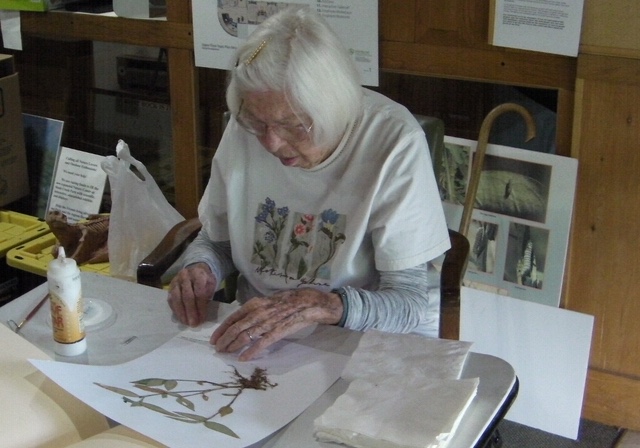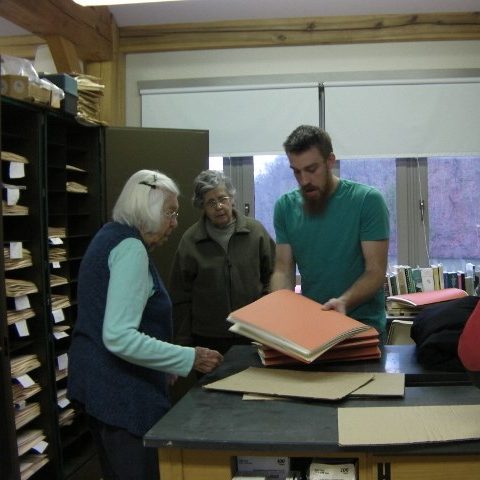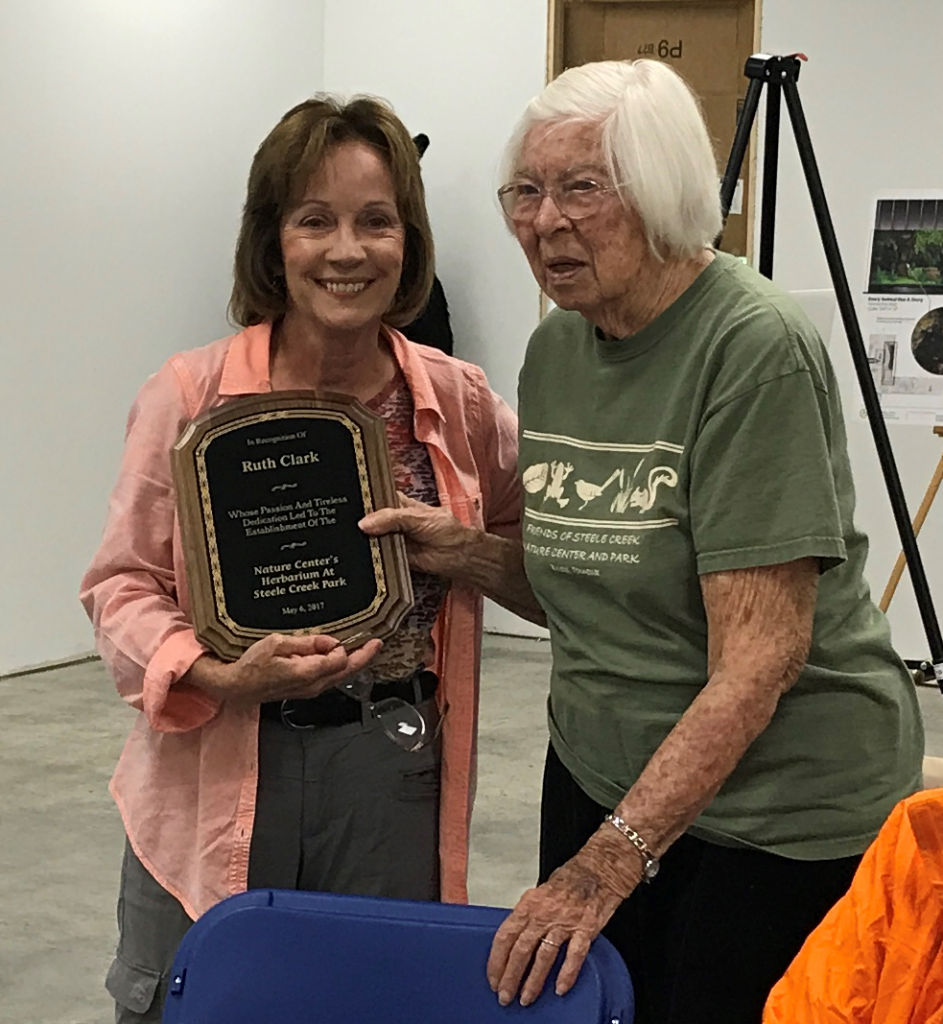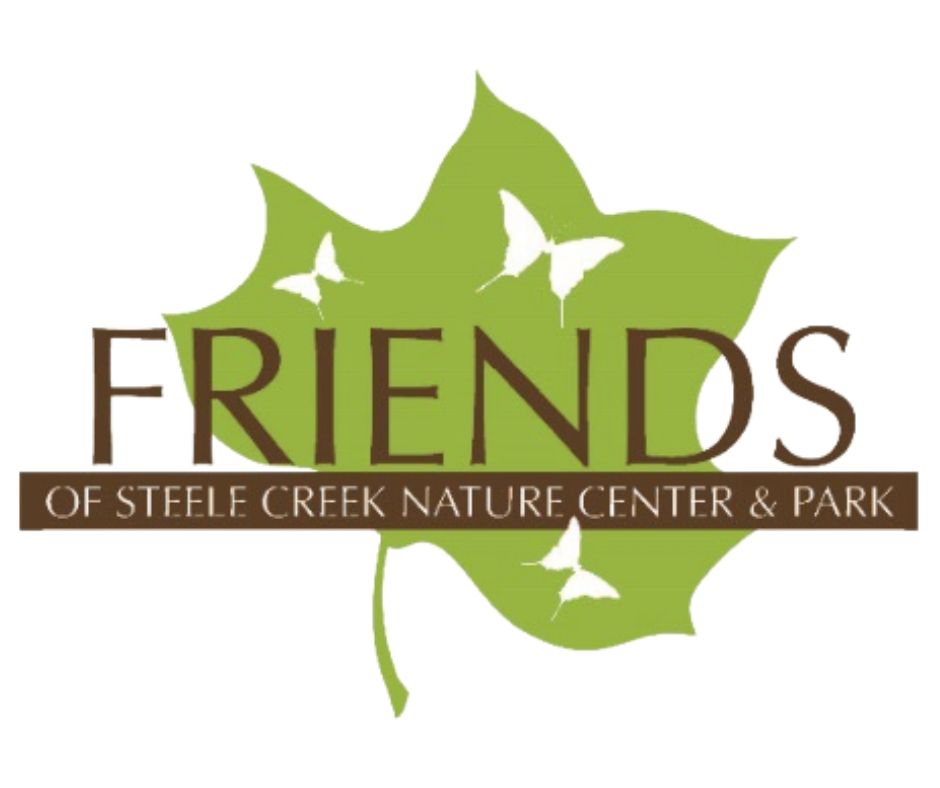On February 2nd, the Bristol Tennessee City Council unanimously approved a resolution naming our herbarium the Ruth Clark Herbarium at The Nature Center at Steele Creek Park. The resolution was requested by Friends of Steele Creek and had previously been approved unanimously by the City’s Parks and Recreation Commission. Ruth, who passed away last February at age 93, was responsible for establishing the herbarium over a decade ago.

Ruth Buck Clark was simply “fascinated” with botany. While residing in Florida, she established her first herbarium at the Disney Wilderness Preserve in Kissimmee. Shortly after her family moved to this area in 2008, at the age of 83, she proposed the establishment of an herbarium at Steele Creek Park. According to her notes
“I proposed that the park could use a herbarium, as it lay in the foothills of the Appalachian Mountains. The Bristol Tennessee park staff approved of the idea and the Friends of Steele Creek Nature Center also okayed it. Donations were made of 2 metal herbarium files and 2 plant presses. Materials such as blotting paper manila folders 4 specimens, mounting paper, special herbarium glue and reference books were paid for by the Friends. Collecting of plant material started on October 10th, 2010. The first specimen was a Boneset, Eupatorium perfoliatum, an Aster. We have collected, identified, accessioned and mounted nearly 500 specimens at this time. These specimens are filed in the herbarium cabinets according to Latin family name.”
An herbarium is a systematically arranged collection of dried plants (leaves, roots, stems, flowers, fruit or seeds). The plants are collected when the leaves are dry but not withered. The specimens are placed in a bag until they are ready to be pressed, then between folded sheets of newspaper. Each plant is identified by common name, Latin name, family name, date it was collected, where in the park it was collected, and who collected it. That information is placed inside the newspaper until the specimen is put in a press to dry. The pressed layers include cardboard first, then the plant specimen in its newspaper, then a blotter, then a second sheet of cardboard. It then must dry for at least one week, after which the mounting process begins.

Ruth meticulously documented her collections and shared with her volunteers the entire learning process of collecting, drying, pressing, preserving, and mounting the specimens, all of which are then arranged using an accepted system of classification. Her dream was that the collection would be available for use and study by other herbaria, botanists, and the general public. Ruth felt that an herbarium is like a dictionary of the plants of a given area. It shows the changes occurring in that area from development or land use, global warming, and the introduction of invasive nonnative plants. She also felt that an herbarium would give the Park prestige, as it represents an important resource for biodiversity and evolutionary research.
Her daughter Mary Clark, naturalist Larry McDaniel, Master Gardener Sharon Foster, Adrianne Hess, naturalist Don Holt and others helped identify and collect the plants for the herbarium. In 2014-15 Phil Klahs completed a thesis project for his ETSU Masters Degree by contributing a large number of additional specimens to Ruth’s herbarium collection, which now has approximately 1,100 species.

Like many volunteers who have started wonderful projects at the Park we are very grateful for her many years of dedication in establishing the herbarium at The Nature Center. Ruth was presented with a much deserved Volunteer Appreciation plaque at our Friends Annual Meeting in 2016. A sassafras tree was also planted in her honor at the Park’s Arboretum near Millcreek. She will be missed and fondly remembered.

Now that the City is finishing renovation of the downstairs area of the former Nature Center, Friends has purchased two scientific-grade herbarium cabinets to safely store the valuable specimens collected and preserved by Ruth and others. Construction of the Nature Center expansion, and now COVID-19, resulted in a pause in the work on the herbarium. As soon as feasible, we hope to resume the project adding to the already impressive collection. If this sounds like something you would like to get involved with when it does, let us know by sending an e-mail to mail@friendsosfsteelecreek.org.

